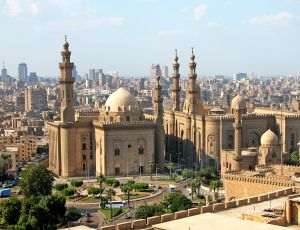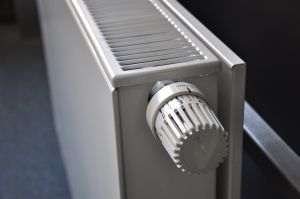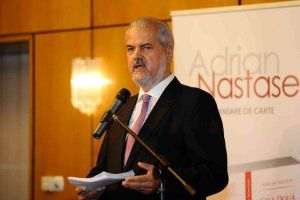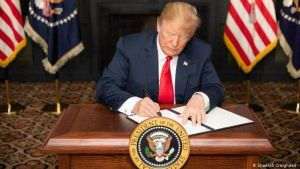The celebration of the Day of the Romanian Army took place yesterday, almost in anonymity, if we take into account the few events organized to mark the day of October 25 and the simple setting in which they took place. For example, in the Capital, wreaths were laid only at the "Tomb of the Unknown Soldier" monument located in Carol I Park and at the heroes' monument in front of the Charles I National Defense University. In addition to these events, in the evening a torchlight retreat of the members of the Guard Mihai Viteazul.
Apart from the participation of the highest officials of the state at the event in Carol Park, the other events were given secondary or third place by the central authorities, a fact noted since the action in front of the National Defense University, located in the immediate vicinity of the Palace Cotroceni, an action at which both President Klaus Iohannis, Prime Minister Marcel Ciolacu and the Minister of National Defense, Angel Tîlvăr were sublime, but were completely absent, being represented by other people. The only officials present at that event were Paul Stănescu, the vice-president of the Senate, and Dan Barna, the vice-president of the Chamber of Deputies.
At the event in Carol Park, President Klaus Iohannis said:
"We are going through a very complicated period, in which peace and the entire security climate at the global level are threatened by regional conflicts with the potential to worsen. Europe is facing an unprecedented crisis since the Second World War as a result of the Russian Federation's brutal and illegal military aggression against Ukraine, while the shocking and reprehensible terrorist attack of October 7 against the State of Israel risks completely destabilizing the East Long-term means. In this difficult context, the role of the Romanian Army in ensuring national security and collective defense on NATO's Eastern Flank is all the more relevant. The Romanian military, together with the allies present on the territory of our country, to whom I also thank on this occasion, are key elements in maintaining NATO's deterrence and defense posture in the Black Sea region, an area of strategic importance for the Euro-Atlantic area. Today, through NATO membership and the Strategic Partnership with the United States, Romania benefits from the strongest security guarantees in history. For our part, we are determined to defend the values of democracy and are fully committed to efforts to strengthen regional, European and Euro-Atlantic security and stability. (...) We will continue to be a credible and predictable partner within NATO and the European Union, a pillar of stability in Eastern Europe and an important security provider in the Black Sea region. We will also continue to pay special attention to the provision of modern combat and protective equipment. Starting this year, we are allocating 2.5% of GDP to Defense, and at least 20% of this budget will continue to be allocated to endowment of the armed forces. This solid base will allow us to carry out a series of programs to modernize existing equipment and equip it with modern ones, including: multi-role aircraft, modern defensive systems and equipment, radar systems, as well as individual and collective protection equipment. These, along with a high level of training, will ensure a credible, strong defense capability adapted to the new security requirements. We must always be able to respond promptly and effectively to the increasingly diverse challenges we face".
Prime Minister Marcel Ciolacu also started his speech referring to the current tense political situation at the global level. The Head of Government declared: "The deterioration of the security situation at Romania's borders, but also the conflict in the Middle East, proves to us one more time why we need a strong Army to face the new challenges.
We are members of NATO, and this is a guarantee that the security of Romanian citizens will never be endangered. However, we must understand that deterring and effectively combating the various types of threats to which we are subjected can only be done if we also invest massively in equipment. This is why, starting this year, we have allocated a budget of 2.5% to Defense. This political decision allowed the development of a greater number of endowment programs, but also the initiation of an extensive process of modernization and transformation of the Romanian Army. (...) It is essential that our military be prepared and invest in resources and technology to meet these challenges effectively."
Regarding the endowment of the Romanian Army, Angel Tîlvăr, the Minister of National Defense stated: "The Romanian Army is in full modernization and transformation process, already managing to reach, in many dimensions, NATO standards. Ensuring a budget of 2% of GDP, starting in 2017, and the increase to 2.5% this year allowed the start of ambitious programs to equip with the latest technology and equipment. The endowment plans approved by the Supreme National Defense Council, the essential procurement programs approved by the Romanian Parliament and supported by the Government will ensure a solid basis for the development of our army in the coming years and will significantly strengthen NATO's eastern flank".
The Minister of National Defense showed that at the moment approximately 800 Romanian soldiers are in missions and operations under the command or mandate of NATO, the EU and the UN and that over 5,000 allied soldiers are deployed in our country, who train together with Romanian soldiers, for the defense of the Eastern Flank.
The above statements by Romanian officials with duties in the field of national defense are only partially covered by reality, if we take into account the fact that, from 2014 (NATO summit in Wales) onwards, our country has never spent the entire annual budget allocation of 2% of the Gross Domestic Product for the armed forces, according to data presented each year by the Stockholm International Peace Research Institute (SIPRI).
So the 2.5% allocation established last year for the next decade cannot be said to be spent annually in full. Especially since some procurement programs have been canceled, as was the case with the purchase of the four corvettes intended for the Romanian Naval Forces, a purchase that was canceled on August 7, 2023, after the contract had been awarded to the Franco-Romanian association Naval Group on July 3, 2019 -Constanţa Naval Shipyard.
However, it seems that a large part of the allocated amount will be directed towards the acquisition of new military combat techniques, inter-allied command complexes, drones, as well as Scorpene submarines, to which F35 fighter jets will also be added, whose acquisition has just received the green light from the defense committees in the Senate and the Chamber of Deputies, and which will take approximately $6.5 billion from the state budget, excluding VAT. The program approved by CSAT provides for two purchases of F-35 aircraft. In the first phase, two squadrons (32 aircraft) will be purchased, and in the second phase - one squadron (16 aircraft). The sum of 6.5 billion dollars will be used for the purchase of aircraft, engines, logistical support, pilot and staff training services, flight simulators.
Also included in this price is special air-to-air (for aerial combat) and air-to-ground (for hitting ground targets) ammunition.
At the moment, the Romanian Air Force has F-16 military aircraft purchased from Portugal. Another flotilla of F-16s was purchased from Norway.
If the Army Day passed almost in anonymity, we hope that at least on December 1 - Romania's National Day, we will see the real deployment of military forces that will show us at what level the Romanian Army is.
NOTE:
Romanian Army Day is celebrated annually on October 25. The holiday was established by Decree no. 381 of October 1, 1959. The choice of October 25 is not random, but refers to October 25, 1944. Then, the Romanian army managed to liberate Northern Transylvania from the German-Hungarian occupation, after the Battle of Carei. We remind you that Northern Transylvania had been lost to the Hungarians following the Vienna Dictatorship of August 30, 1940. After the liberation of the national territory, on October 25, 1944, the Romanian Army continued to fight on the territories of Hungary, Czechoslovakia and Austria, alongside the allied troops , contributing, through new sacrifices and sacrifices, to the great victory achieved on May 9, 1945, which marked the end of the Second World War in Europe.
The Day of the Romanian Army is marked at the national and local level, mainly by hoisting the national flag at the headquarters of military institutions, raising the Great Pavoaz on board naval and river military ships, organizing military ceremonies and commemorative activities in the country's garrisons, in the theaters of operations and in the countries where Romania has accredited Defense Attaches.















































